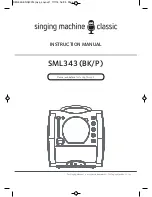
100c
User Manual
42
ch
.
6
weld joint is stressed by hammering etc . This means that welding over porosity in a Pd piece can
be accomplished with the Orion (or laser) to help clean up a ring during the finishing process .
However, welding more than one overlapping weld will inevitably lead to cracking (laser or Pulse
Arc welder) .
Palladium cracking can be thought of as a combination of hot cracking and a new weld puddle
crystal structure problem . After a weld the molten Pd re-crystallizes, typically forming a large and
weak metal grain structure . When welds overlap the new crystal structure in the previous weld, the
new puddle will be weak compared to the original metal . The result is a crack will start at the edge
of the new weld where it overlaps with the old weld joint . The crack will then run along the middle
of the weld puddle in the direction of the overlapping joints . This is due to the stresses created
during the weld puddle cooling process as described above with hot cracking . However, this time,
instead of geometry causing cracking, a rip starts in the old crystal structure and propagates
during the cooling process, much like ripping a piece of paper . The result – Pd is difficult to weld
successfully without breakage . Typically, with Pd, single spots of porosity can be welded and fixed
but overlapping welds will crack .
Pulse Arc Welding: Joint Preparation
The Orion 100c can be adjusted to a weld penetration of up to approximately 0 .66 mm in depth
(depending on the material) . However, deeper penetration usually also means large spot size
around 1 .5 to 2 mm . When deep penetration is desired but the weld spot size needs to remain
small or the work piece thickness is very thick, additional weld joint preparation may be necessary .
The Y joint is the simplest joint to prepare. Use fill
wire of an appropriate diameter to build up material
in the joint. Weld with no fill material for the first pass
to increase the weld penetration into the joint. Then
add fill wire to build up material in the top of the Y
until the material is flush with the top surface.
Other joint preparations like X, V, etc. are possible and the welding
procedure is similar.
Pulse Arc Welding: Warping
In some specialized applications, precise positioning of the work piece relative to a model is
very important . However, during the melting process the weld pool will expand and shrink
asymmetrically, meaning that the expansion during melting is less than the shrinkage during
cooling . This asymmetric expansion can warp the work piece .
The warping can be used to one’s advantage if done correctly . Often the user can simply observe
the natural warp in the work piece and place welds to warp the part back into proper alignment .
Even if warping is not desired there are steps to avoid this problem .
















































